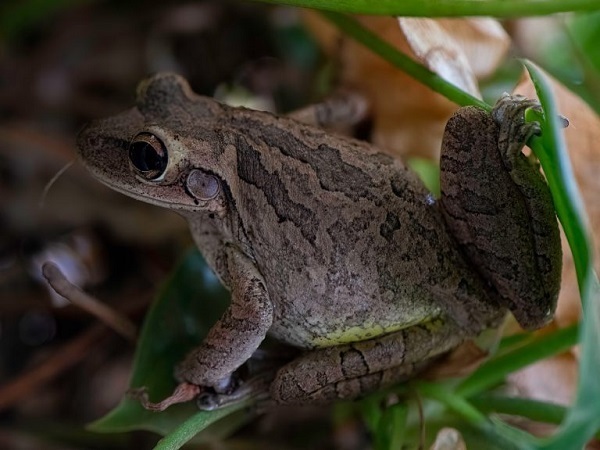
Dutch Caribbean Nature Alliance (DCNA) shares information about the invasive species Osteopilus septentrionalis or Cuban treefrog on Sint Eustatius. It is an issue that we share here, in Puerto Rico, and on other islands across the Caribbean region. [Many thanks to Peter Jordens for bringing this item to our attention.]
Researchers from the St. Eustatius National Parks Foundation (STENAPA), working with Wageningen Marine Research, have confirmed the presence of the invasive Cuban Treefrog (Osteopilus septentrionalis) on St. Eustatius. Surveys carried out between January and May 2025 revealed that the species is already breeding on the island. Community members also reported seeing a frog as early as 2022, suggesting the population has been established for some time. The species was most likely introduced through imported plants from Florida.
Small Frog, Big Problem: While the Cuban Treefrog may look harmless, it’s known across the Caribbean as a highly successful invader. It breeds quickly, eats almost anything, and adapts to a wide range of environments. The study found both adults and juveniles in a single garden, suggesting the species has already started reproducing locally. This is concerning news: the frog preys on insects, native lizards, and even other frogs, and its toxic skin can harm local predators like the red-bellied racer snake. In other places, such as Antigua and Dominica, similar introductions have led to widespread ecological disruption.
A Regional Wake-Up Call: With this discovery, six out of fifteen terrestrial amphibians and reptiles on St. Eustatius are now non-native. This mirrors a growing challenge across the Dutch Caribbean, where small islands face repeated introductions of invasive species through trade and travel. The Cuban Treefrog’s arrival highlights the urgent need for stronger biosecurity measures at harbors and stricter checks on shipments, especially live plants. Preventing new invasions is far easier (and cheaper) than trying to remove established populations later.
What You Can Do: Island residents and visitors can help by reporting unusual frogs or lizards to STENAPA. Be cautious when importing or transporting live plants and always check for hitchhiking animals. Every sighting report matters, it helps scientists monitor the spread of invasive species before they take over. Protecting the Caribbean’s unique wildlife starts with awareness, quick action, and community involvement. [. . .]
For full article, see https://dcnanature.org/treefrog
[Photo above by Hans Smulders: Cuban tree frog, Osteopilus septentrionalis.]
